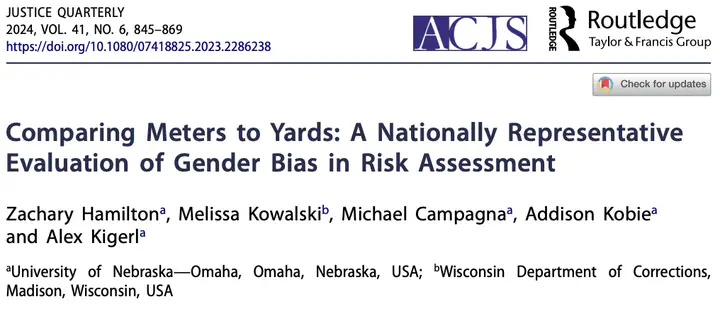Comparing meters to yards: A nationally representative evaluation of gender bias in risk assessment

Abstract
Risk-needs assessments (RNAs) assist correctional staff in assigning supervision and programming. While gender is a well-known predictor of crime, for decades contemporary RNAs have claimed “gender-neutrality” or risk prediction equality for males and females. Unfortunately, females are frequently overclassified, relegated to a category higher than their risks indicate. Using ridge and mixed effects regression methods, we sought to enhance the predictive accuracy of the Modified Positive Achievement Change Tool (MPACT) comparing three common assessment development methods via a 10-state sample of youth (N = 241,596) across multiple justice settings. Findings demonstrated recidivism rates vary substantially by gender and bias/overclassification is likely for assessments using a “gender-neutral” approach. Tools that oversample females, or attempt “equally weighting,” have similar issues. However, “gender-specific” methods create prediction parity, rooting out overclassification. Study takeaways include the need to evaluate tools for overclassification, methods of eliminating gender bias, while achieving strong predictive validity in development of the MPACT.